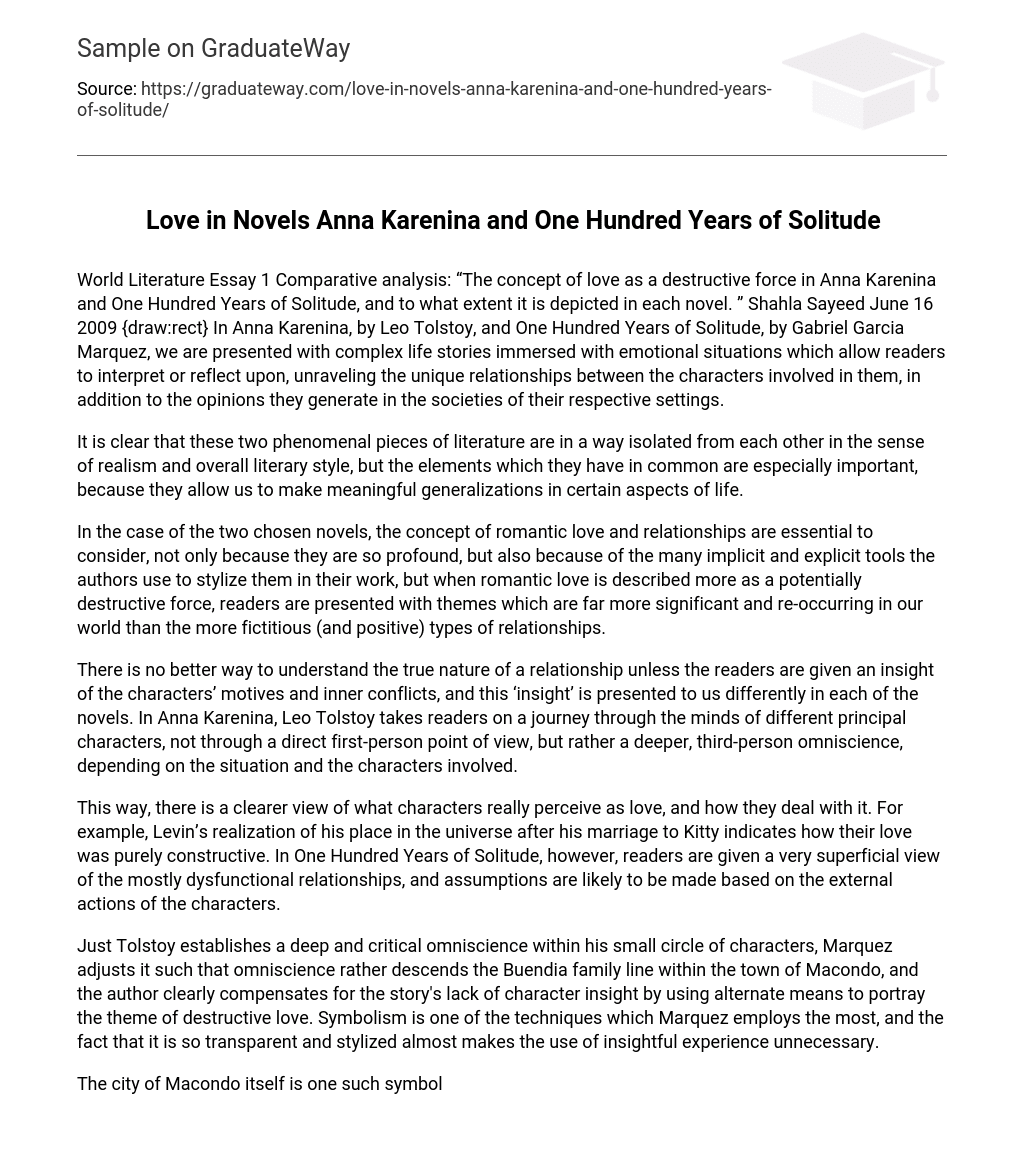In Anna Karenina, by Leo Tolstoy, and One Hundred Years of Solitude, by Gabriel Garcia Marquez, we are presented with complex life stories immersed with emotional situations which allow readers to interpret or reflect upon, unraveling the unique relationships between the characters involved in them, in addition to the opinions they generate in the societies of their respective settings.
It is clear that these two phenomenal pieces of literature are in a way isolated from each other in the sense of realism and overall literary style, but the elements which they have in common are especially important, because they allow us to make meaningful generalizations in certain aspects of life.
In the case of the two chosen novels, the concept of romantic love and relationships are essential to consider, not only because they are so profound, but also because of the many implicit and explicit tools the authors use to stylize them in their work, but when romantic love is described more as a potentially destructive force, readers are presented with themes which are far more significant and re-occurring in our world than the more fictitious (and positive) types of relationships.
There is no better way to understand the true nature of a relationship unless the readers are given an insight of the characters’ motives and inner conflicts, and this ‘insight’ is presented to us differently in each of the novels. In Anna Karenina, Leo Tolstoy takes readers on a journey through the minds of different principal characters, not through a direct first-person point of view, but rather a deeper, third-person omniscience, depending on the situation and the characters involved.
This way, there is a clearer view of what characters really perceive as love, and how they deal with it. For example, Levin’s realization of his place in the universe after his marriage to Kitty indicates how their love was purely constructive. In One Hundred Years of Solitude, however, readers are given a very superficial view of the mostly dysfunctional relationships, and assumptions are likely to be made based on the external actions of the characters.
Just Tolstoy establishes a deep and critical omniscience within his small circle of characters, Marquez adjusts it such that omniscience rather descends the Buendia family line within the town of Macondo, and the author clearly compensates for the story’s lack of character insight by using alternate means to portray the theme of destructive love. Symbolism is one of the techniques which Marquez employs the most, and the fact that it is so transparent and stylized almost makes the use of insightful experience unnecessary.
The city of Macondo itself is one such symbol, because it is portrayed very much like a stage in the story in which characters enter and exit just as actors would, and the events which take place beyond it are averted from the audience’s view. By doing this, Marquez sharpens our focus on the smaller symbols which exist in Macondo; however, there are few symbols in particular which connote love with destructiveness.
The pig’s tail, which Aureliano IV and Amaranta Ursula’s child is born with, for example, is one such symbol, because in the novel, such a phenomenon was only bound to occur if two people were to commit incest. Such an occurrence is bizarre and unworldly, so it strongly reflects upon Marquez’s technique of ‘magical realism’, which is – more than making the novel aesthetic and modern – a method for stylistically covering the true atrocities which existed in Marquez’s world, but in addition, it is what sets the barrier between itself and the realism of Anna Karenina.
On the whole, in Anna Karenina, the degree of omniscience for each of the characters is significant, because it helps readers understand in depth how the relationships are established, how they develop internally, and the extent to which the relationships survive, but in One Hundred Years of Solitude, the rich use of symbolism is sufficient for allowing the readers to break into the minds of the characters, or at least interpret the emotions they experience in order to generalize whether or not they are destructive.





